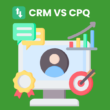Table of Contents Show
Welcome to our blog post on workflow optimization, where we delve into the art of streamlining processes to maximize productivity and efficiency. In today’s fast-paced business world, optimizing your workflow is crucial for staying competitive and ensuring smooth operations.
Join us as we explore the steps, best practices, case studies, and tools that can help you unlock greater efficiency in your organization. Whether you’re a small business owner or a seasoned professional looking to enhance your productivity game, this guide has got you covered. Let’s dive in!
Understanding Workflow Optimization
Automation in workflow optimization reduces manual labor, improves resource allocation, and enables seamless communication and data sharing across departments.
Automation plays a crucial role in workflow optimization, streamlining processes and enhancing overall efficiency. By automating repetitive tasks, businesses can significantly reduce manual labor and allocate resources more effectively.
Integrated systems further support this optimization by facilitating seamless communication and data sharing across departments, ensuring a smooth flow of work from start to finish.
What is workflow optimization?
Workflow optimization is the process of improving and streamlining the sequence of tasks, activities, and processes within a system to maximize efficiency. It involves identifying bottlenecks, eliminating unnecessary steps, automating repetitive tasks, and allocating resources effectively.
An optimized workflow consists of well-defined processes that are streamlined for maximum efficiency. It includes clear communication channels, standardized procedures, effective use of automation tools where applicable, and proper allocation and utilization of resources based on priority levels.
Why is workflow optimization important?
Impact on productivity and efficiency: Workflow optimization, through the strategic use of automation and streamlined processes, can significantly enhance productivity and efficiency. By eliminating manual tasks and reducing unnecessary steps, businesses can make the most out of their resources and achieve higher output in less time.
Reducing errors and rework: Implementing workflow optimization techniques helps minimize errors by standardizing procedures and creating clear guidelines for each task. This reduces the likelihood of mistakes or misunderstandings occurring throughout the process. As a result, businesses can reduce waste caused by rework or delays due to error correction.
Enhancing overall business performance: Effective workflow optimization positively impacts overall business performance by maximizing resource utilization. With optimized workflows in place, organizations are able to leverage their systems more efficiently, leading to faster turnaround times, improved customer satisfaction, and ultimately greater profitability.
Benefits of workflow optimization
Time savings and improved turnaround times are major benefits of workflow optimization. By automating repetitive tasks and streamlining processes, organizations can significantly reduce the time it takes to complete projects or deliver products/services to customers. This not only improves efficiency but also allows for quicker response times, enhancing overall customer satisfaction.
Cost reduction and resource allocation efficiency are other advantages of workflow optimization. By identifying bottlenecks in systems and optimizing resource utilization, businesses can minimize wastage and unnecessary expenses. Through better planning and coordination, companies can allocate resources more effectively, resulting in cost savings that positively impact their bottom line.
Higher quality outputs and customer satisfaction are outcomes of optimized workflows. When processes are streamlined with clear guidelines in place, it ensures consistency across all stages of production or service delivery. This leads to higher-quality outputs that meet or exceed customer expectations, ultimately boosting satisfaction levels.
By implementing workflow optimization strategies that leverage automation technology while addressing process inefficiencies head-on, organizations can unlock tremendous benefits such as time savings, cost reduction, efficient resource allocation, improved output quality,and enhanced customer satisfaction.
Common challenges in workflow optimization
Identifying bottlenecks and areas for improvement is a crucial step in workflow optimization. By analyzing processes and systems, organizations can pinpoint inefficiencies and devise strategies to streamline operations. Automation can play a key role in this process, helping to identify bottlenecks more efficiently and suggest improvements.
Gaining employee buy-in for changes is another challenge in workflow optimization. Employees may be resistant to change or feel uncertain about new processes or systems. It’s important for organizations to effectively communicate the benefits of optimization, involve employees in the decision-making process, and provide training and support during implementation.
Maintaining flexibility while optimizing workflows is essential for adaptability in today’s dynamic business environment. Organizations must ensure that their optimized workflows are not rigid or inflexible but rather allow room for adjustments as needed. This includes allocating resources appropriately and continuously evaluating the effectiveness of implemented changes.
- Identifying bottlenecks through automation
- Gaining employee buy-in through effective communication
- Maintaining flexibility by evaluating optimizations regularly
Steps to Optimize Your Workflow
Identify and map your current workflow: Begin by thoroughly understanding the steps and processes involved in your current workflow. Create a visual representation or flowchart to identify how tasks are completed, who is responsible for each step, and any dependencies between tasks.
Analyze and evaluate the current workflow: Take a critical look at your existing workflow to identify inefficiencies, unnecessary steps, or areas where processes can be streamlined. Look for opportunities to consolidate tasks, eliminate duplicated efforts, or automate repetitive actions.
Implement technology and automation: Utilize software tools and technology solutions that can streamline your workflow. Look for automation options that can handle routine tasks, freeing up time for more important activities. Implement project management tools to track progress, assign responsibilities, and collaborate effectively.
Streamline communication and collaboration: Improve communication within your team by using efficient channels such as instant messaging platforms or project management systems with built-in chat features. Foster a collaborative environment where team members can easily share information, provide feedback in real time, and access necessary resources.
Establish clear workflows and standard operating procedures (SOPs): Document standardized procedures so that everyone knows what needs to be done at each stage of the process. Clearly define roles, responsibilities, due dates, and deliverables. This will ensure consistency, reliable results, and accountability throughout the entire workflow.
Continuously monitor and optimize your workflow: Regularly review key performance indicators (KPIs)to assess the effectiveness of your optimized workflows. Make data-driven decisions based on metrics like turnaround time, error rates, and customer satisfaction ratings. Regularly seek feedback from employees regarding their experiences with new workflows. Optimization is an ongoing effort; adaptation is key. Welcoming suggestions for improving workflows encourages agile problem-solving and fosters a culture of continuous improvement
Identify and map your current workflow
Document all existing processes: Begin by thoroughly documenting all the processes and steps currently involved in your workflow. This includes capturing details such as inputs, outputs, tools used, and any specific requirements.
Identify key stakeholders and their roles: Identify the individuals or teams who play a crucial role in your workflow. Clearly define their responsibilities and understand how they contribute to the overall process.
Create a visual representation of your workflow by mapping out each task in sequential order. Identify any dependencies between tasks to gain a better understanding of how one step impacts another. This will help you identify areas where improvements can be made for increased efficiency.
- Document all existing processes
- Identify key stakeholders and their roles
- Map out the sequence of tasks and dependencies
Analyze and evaluate the current workflow
Assessing efficiency levels for each process is crucial in optimizing workflow. By analyzing the current workflow, it becomes possible to identify any redundancies or inefficiencies that may be hindering productivity. Additionally, evaluating resource allocation ensures that resources are allocated effectively and efficiently, maximizing their impact on the overall workflow.
Identify bottlenecks and areas for improvement
Pinpoint tasks with long durations or high error rates to identify potential bottlenecks in your workflow. Look for patterns and commonalities that could be contributing to these delays or errors. Gather feedback from team members about their pain points and areas where they feel the workflow can be improved.
- Analyze tasks with long durations
- Assess tasks with high error rates
- Identify potential causes for delays or errors
- Gather feedback from team members about pain points
By identifying these bottlenecks and areas for improvement, you can take targeted actions to optimize your workflow and increase efficiency.
Implement technology and automation
Researching technological solutions is crucial for streamlining processes and maximizing efficiency. By exploring innovative tools and software, businesses can identify opportunities to automate repetitive tasks. Robotic process automation (RPA) offers a powerful solution for reducing manual labor and increasing productivity.
Additionally, integrating software systems facilitates seamless data flow between departments, enabling real-time collaboration and decision-making. Embracing technology and automation empowers organizations to unlock their full potential in workflow optimization.
Streamline communication and collaboration
Use project management tools to centralize communication channels. By utilizing project management tools, you can streamline communication by consolidating all channels into a single platform. This allows team members to easily access and track conversations, tasks, and updates in one place, reducing the risk of miscommunication or information being overlooked.
Incorporate cloud-based platforms for real-time collaboration. Embrace the power of cloud-based platforms that enable real-time collaboration among team members. These platforms facilitate the seamless sharing of documents, files, and ideas instantly across different locations and time zones. This fosters efficient collaboration and eliminates delays caused by traditional file-sharing methods.
Establish clear guidelines on effective communication practices. To ensure smooth communication within your workflow optimization process, establish clear guidelines on how team members should communicate with each other effectively.
This includes setting expectations for response times, preferred modes of communication (such as email or messaging apps), and proper etiquette when interacting with colleagues. Clear guidelines will help minimize misunderstandings or delays in receiving important information.
Establish clear workflows and standard operating procedures (SOPs)
Determine a standardized format for documenting SOPs, ensuring consistency and clarity in procedures. Incorporate feedback from relevant team members during the creation of SOPs, allowing for collaboration and input from those who will be following them. Regularly review and update SOPs to reflect the latest best practices, ensuring that workflows remain efficient and aligned with industry standards.
- Standardized format for documenting SOPs
- Incorporation of team member feedback in SOP creation
- Regular review of SOPs to reflect updated best practices
Continuously monitor and optimize your workflow
Continuously monitor and optimize your workflow to ensure maximum efficiency. Regularly track key performance indicators (KPIs) and analyze data to identify areas for improvement. Implement a feedback loop that allows you to make adjustments and refine processes in real-time.
Embrace a culture of continuous improvement by encouraging team members to contribute ideas and suggestions for optimizing workflows.
Establish regular check-ins or meetings dedicated specifically to reviewing the current state of workflows, identifying bottlenecks, and brainstorming solutions. By consistently monitoring and optimizing your workflow, you can unlock greater productivity and achieve better results.
Best Practices for Workflow Optimization
Set clear goals and objectives: Clearly define the goals and objectives of your workflow to provide a clear direction for everyone involved. This will help streamline processes and eliminate unnecessary steps, ensuring that tasks are focused on achieving desired outcomes.
Involve all stakeholders: Engage all relevant stakeholders throughout the workflow optimization process. By involving key team members, departments, or external partners early on, you can gather valuable insights and perspectives that contribute to more effective decision-making.
Encourage feedback and continuous improvement: Foster a culture of open communication where feedback is actively encouraged. Regularly seek input from team members to identify areas for improvement within the workflow. Embrace change as an opportunity for growth and continuously refine processes based on feedback received.
Promote a culture of efficiency and productivity: Cultivate an environment where efficiency is prioritized by setting expectations around timeliness, quality, and resource utilization. Encourage collaboration among team members while providing them with the necessary tools and resources to maximize their productivity.
Invest in training and skill development: Recognize the importance of investing in ongoing training programs to enhance skills within your workforce. By staying up-to-date with industry trends, best practices, new technologies or methodologies relevant to your field; employees can continually improve their capabilities which directly impacts workflow optimization efforts.
Set clear goals and objectives
Define specific, measurable goals that clearly outline what needs to be achieved. By setting precise objectives, you provide a clear direction for your team to follow and ensure everyone is working towards the same outcome. Establish achievable timelines that allow for efficient progression of tasks and keep the project on track.
This helps in prioritizing activities, avoiding unnecessary delays, and maximizing productivity. Identify key performance indicators to measure progress and success throughout the workflow optimization process. Tracking these indicators allows you to evaluate performance objectively and make informed adjustments as necessary.
Involve all stakeholders
Engage team members from different departments to ensure a holistic approach to workflow optimization. By involving individuals with diverse expertise, you can tap into a range of perspectives and ideas that will ultimately enhance efficiency.
Include input from management and executives throughout the process. Their insight and guidance are crucial for aligning workflow optimization efforts with broader organizational goals, ensuring buy-in at all levels.
Seek feedback from customers or clients to gain valuable insights into how your workflows impact their experiences. Understanding their needs and preferences allows you to tailor your processes accordingly, improving customer satisfaction while streamlining operations.
Encourage feedback and continuous improvement
Implementing regular review processes is essential for encouraging feedback and continuous improvement. By regularly assessing the workflow, identifying areas of inefficiency, and seeking input from team members, organizations can make informed decisions to optimize their operations.
Creating channels for open communication further enhances this process by providing a platform for individuals to share their ideas and suggestions freely. Embracing a culture of innovation encourages employees to think creatively and propose solutions that can streamline workflows, leading to increased efficiency and productivity in the long run.
Promote a culture of efficiency and productivity
Recognize and reward high-performing individuals or teams:
- Implement a performance recognition program to acknowledge outstanding achievements
- Provide incentives such as bonuses, promotions, or special perks for top performers
Foster collaboration among employees:
- Create cross-functional teams to encourage collaboration and knowledge sharing
- Use collaborative tools and platforms for seamless communication and project management
Eliminate unnecessary bureaucracy or red tape:
- Streamline workflows by identifying and removing redundant processes
- Delegate decision-making authority to lower-level employees to speed up the decision-making process.
Invest in training and skill development
Provide ongoing learning opportunities to employees to enhance their skills and knowledge. By investing in continuous training, organizations can ensure that their workforce stays up-to-date with the latest industry trends and technologies, leading to improved productivity and efficiency.
Support professional certifications or courses that are relevant to employees’ roles and encourage them to pursue further education. This not only enhances individual growth but also contributes to overall organizational success.
Promote knowledge sharing within the organization by creating platforms for employees to exchange ideas, best practices, and lessons learned. Encouraging collaboration fosters a culture of continuous learning where employees can leverage each other’s expertise for better decision-making and problem-solving. This sharing of knowledge leads to increased innovation, improved processes, and ultimately optimized workflows throughout the organization.
Case Studies: Successful Workflow Optimization Examples
Company A implemented workflow optimization strategies to streamline its manufacturing processes. By analyzing each step of the production line, they identified bottlenecks and inefficiencies, then made targeted improvements such as implementing automated machinery and optimizing inventory management. As a result, lead times were reduced by 30% and product quality improved significantly.
Company B focused on improving project management workflows to enhance efficiency. They introduced collaborative software tools that allowed real-time communication and task tracking among team members. In addition, they implemented standardized templates for project timelines and deliverables, ensuring clear expectations from start to finish. These changes led to a 20% reduction in project completion time and increased client satisfaction.
Tools and Technologies for Workflow Optimization
Project management software, collaboration tools, workflow automation software, data analytics and reporting tools, and communication platforms are all essential tools and technologies for optimizing workflows. These powerful solutions streamline processes, enhance productivity, improve communication among team members, provide valuable insights into performance metrics, and ultimately drive efficiency throughout the organization. By harnessing these cutting-edge technologies effectively, businesses can unlock their full potential and achieve their goals with greater ease.
Project management software
Task allocation and tracking, resource management, and Gantt chart visualization are essential features of project management software. With task allocation and tracking capabilities, teams can efficiently assign tasks to team members, monitor progress in real-time, and ensure accountability.
Resource management tools allow managers to effectively allocate resources such as manpower and equipment to maximize efficiency. Additionally, Gantt chart visualization provides a visual representation of project timelines and dependencies, allowing for better planning and coordination.
- Efficient task allocation
- Real-time progress monitoring
- Enhanced resource allocation
- Clear visualization with Gantt charts
Collaboration tools
Collaboration tools have revolutionized the way teams work together. Real-time document editing allows multiple team members to work on a document simultaneously, enhancing productivity and streamlining workflows. Team messaging and group chats facilitate quick and efficient communication, enabling seamless collaboration and idea sharing.
Additionally, virtual meeting platforms provide a convenient solution for remote teams to connect face-to-face, fostering better engagement and decision-making in real-time. By embracing these collaboration tools, businesses can maximize efficiency and optimize their workflow processes for better results.
Workflow automation software
Workflow automation software is a powerful tool that can revolutionize your business processes. With automated task triggers and reminders, you can ensure that nothing falls through the cracks and that deadlines are always met.
Approval workflows streamline processes by providing a structured framework for reviewing and approving tasks, eliminating bottlenecks and reducing manual errors. Additionally, integration with other business systems allows for seamless data sharing between different departments, improving efficiency and productivity.
- Automated task triggers and reminders
- Approval workflows for streamlining processes
- Integration with other business systems
Data analytics and reporting tools
Customizable dashboards provide real-time performance monitoring, giving you the ability to track key metrics and make informed decisions. With advanced data visualization capabilities, you can easily analyze complex datasets and identify trends or patterns. Automated report generation saves time by automatically compiling data into comprehensive reports, allowing for quick and efficient communication of insights. These data analytics and reporting tools are essential for optimizing workflow efficiency and driving business growth.
Communication platforms
Video conferencing enables seamless remote collaboration by allowing teams to connect face-to-face regardless of their physical locations. This fosters real-time communication, boosts productivity, and strengthens team dynamics. Instant messaging offers a quick and efficient way to share updates, ask questions, and discuss ideas on the go.
It facilitates instant feedback and keeps everyone in the loop without interrupting workflow. Additionally, shared project calendars provide visibility into upcoming tasks and deadlines for all team members, ensuring coordination and effective time management throughout the project lifecycle.
Conclusion
In today’s fast-paced business environment, workflow optimization has emerged as a crucial factor in achieving operational efficiency. By streamlining processes and eliminating unnecessary steps, organizations can maximize productivity and minimize waste. Implementing practical strategies such as automation tools and task prioritization enables teams to work more effectively, resulting in improved outcomes and increased customer satisfaction.
The benefits of optimized workflows extend beyond cost savings; they enhance collaboration among team members, boost employee morale, and pave the way for future growth. Embracing workflow optimization is not just an option but a necessity for businesses seeking sustainable success in the digital age.
More reading for you:










